My fungifriday mushroom adventure 😊
Hello @fungiFriday, fungi hunters, how are doing today
My fungi hunt took place in the university of Nigeria nsukka, area of Eungu state
Two distinct types of mushrooms were observed, each offering insights into the ecological roles and diversity of fungi in tropical environments. The first mushroom, found growing on decaying wood, exhibits a leathery, shelf-like structure with concentric zones of brown and greenish coloration.
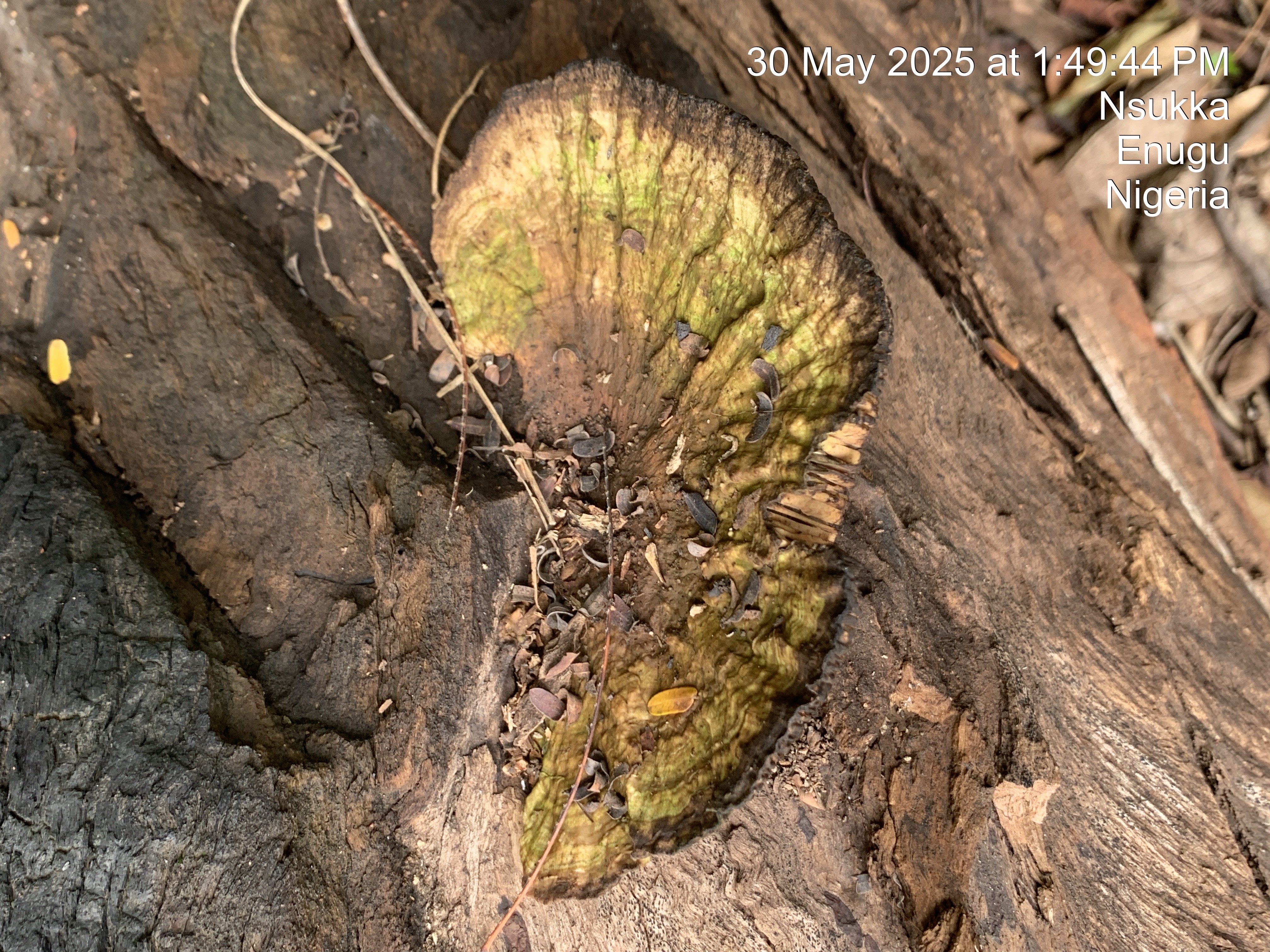
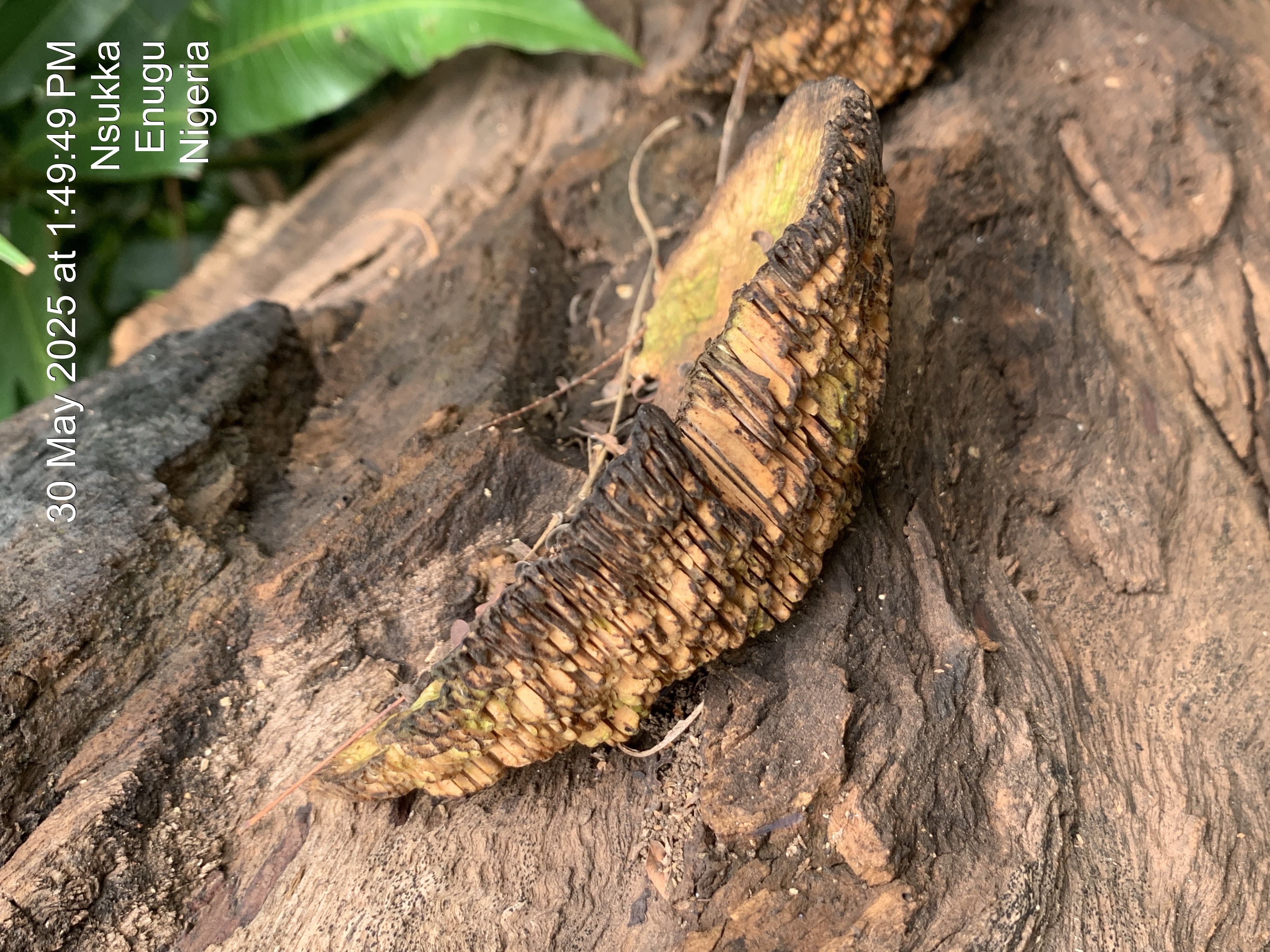

This type of mushroom is likely a bracket fungus, possibly from the Ganoderma or Trametes genus. These fungi are polypores, meaning they release spores through pores on their undersides rather than gills. They are important decomposers in forest ecosystems, breaking down tough plant materials like lignin and cellulose.

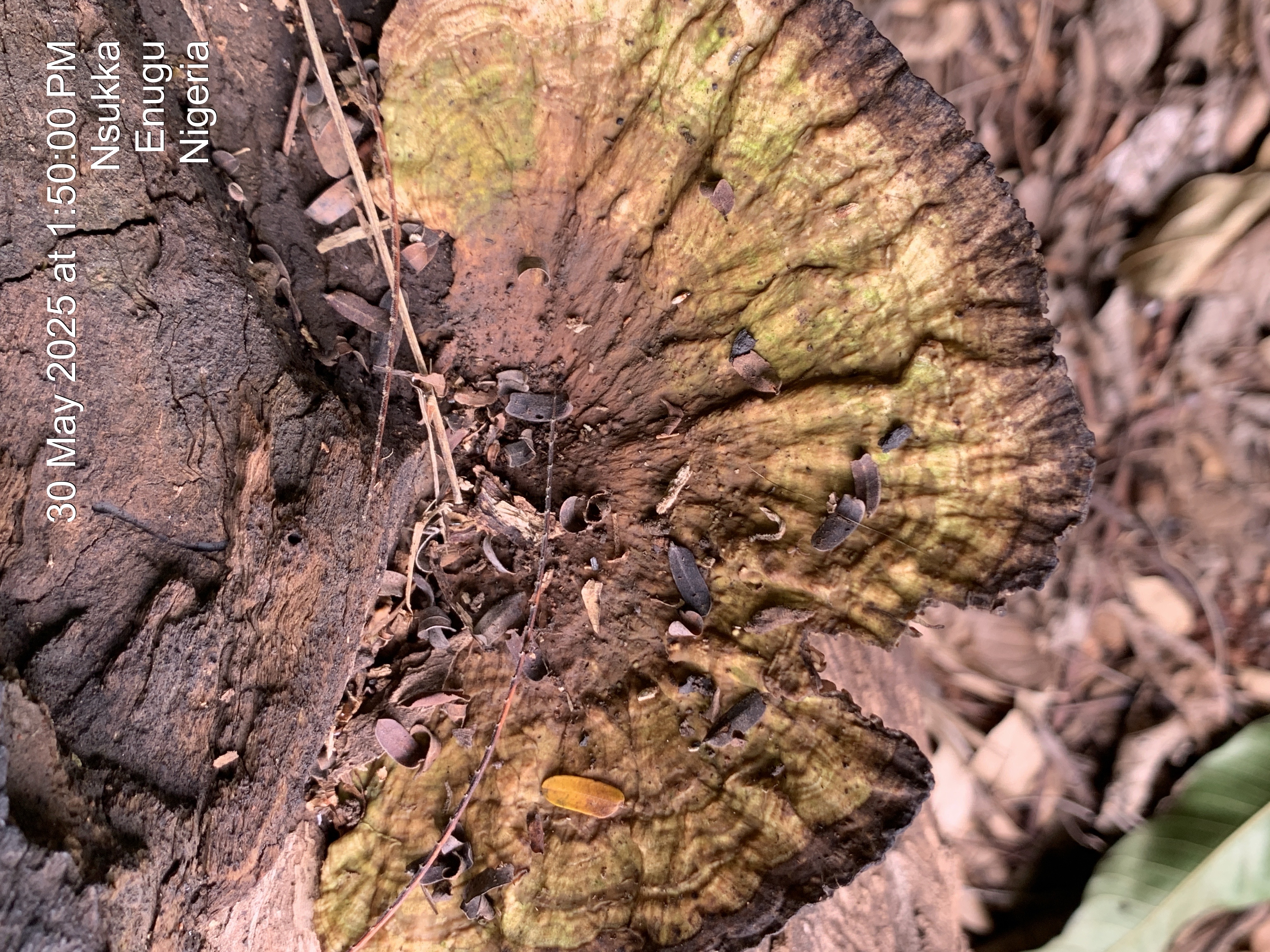
Some species in this group also have ethnomedicinal value, though proper identification is essential before any use.
The second mushroom, located along Library Road at the University of Nigeria, Nsukka, presents a bright orange, lobed structure with gills on the underside.
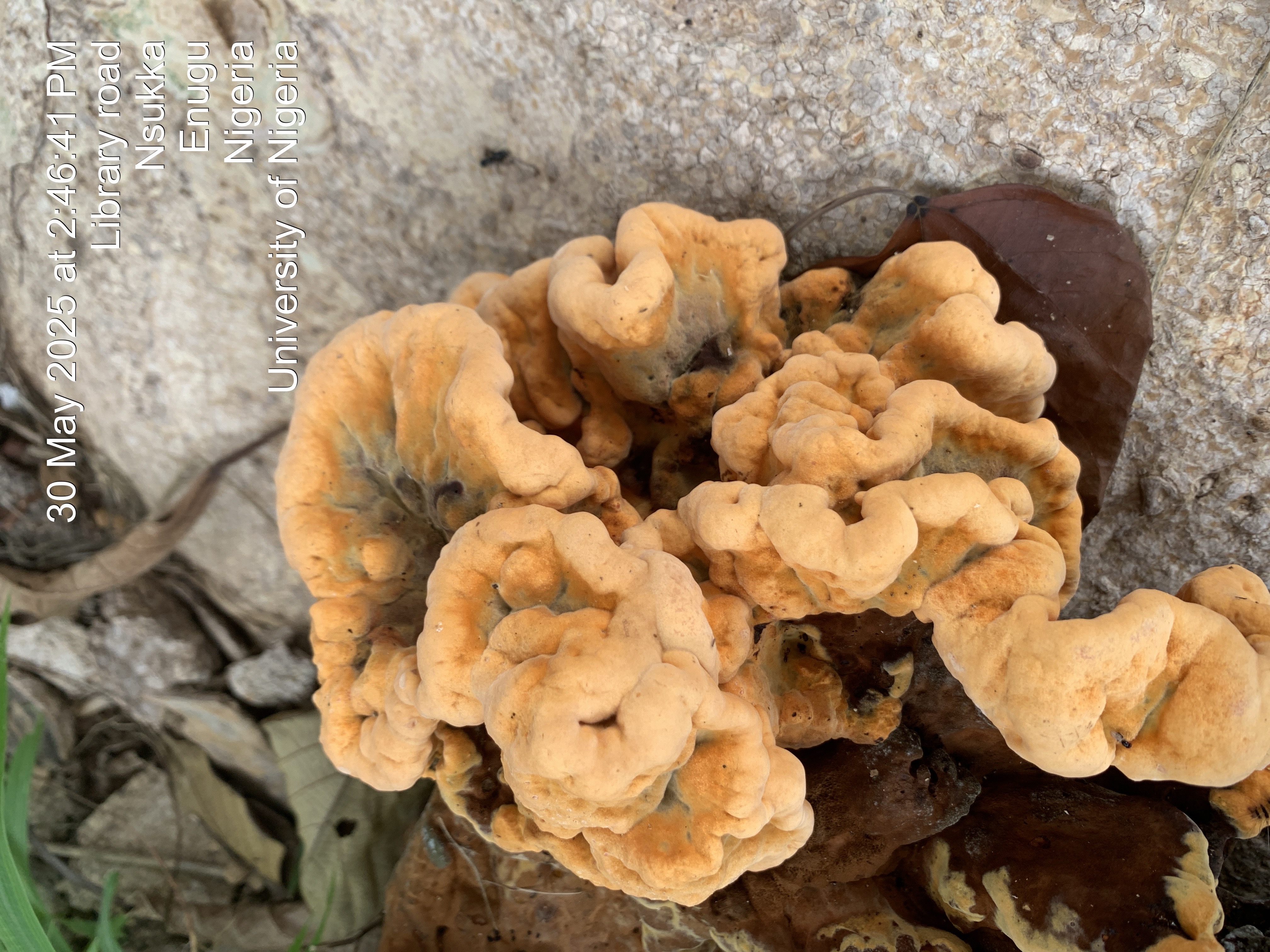
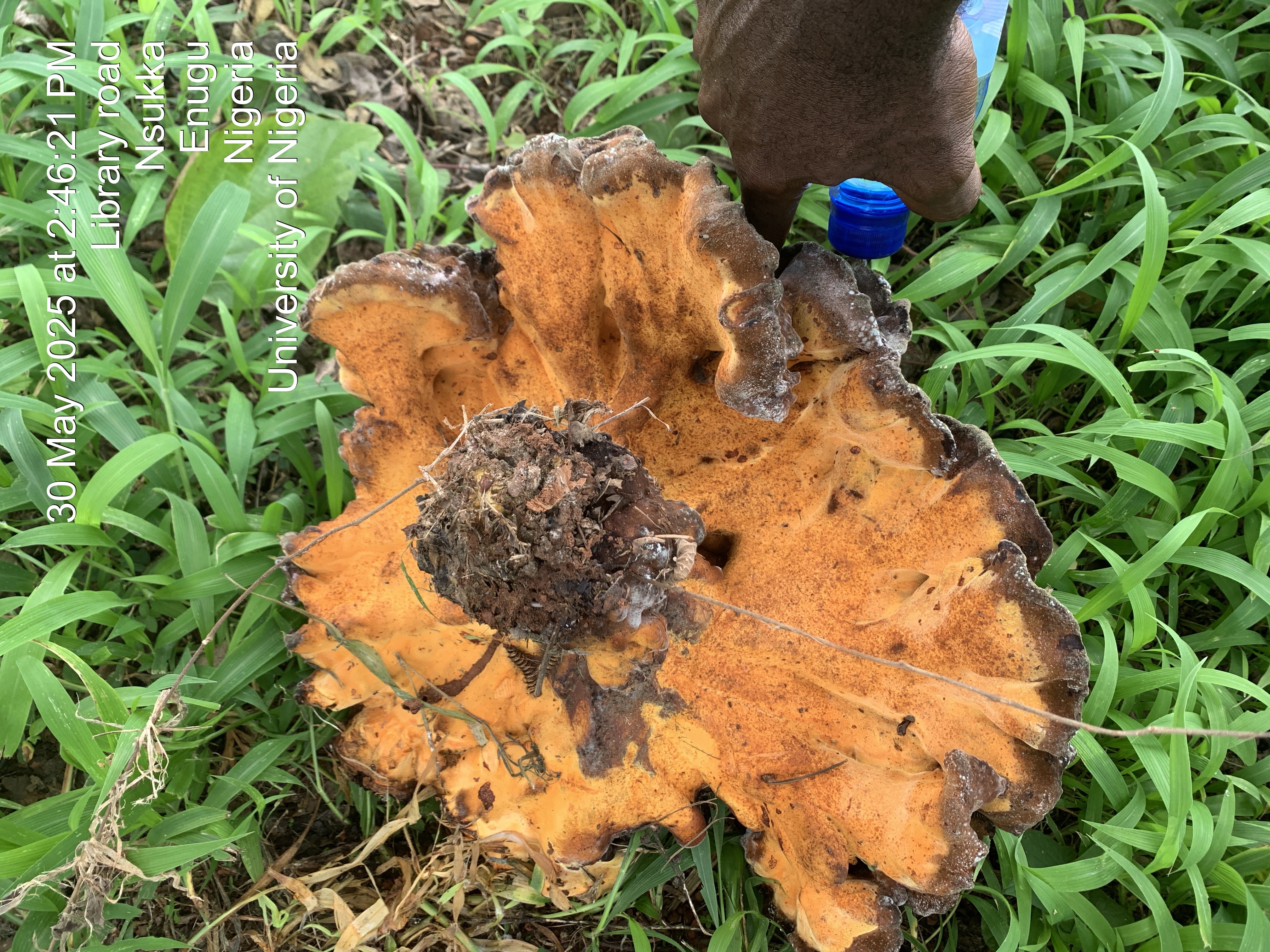
This feature rules out typical polypores and points instead to a gilled mushroom, most likely Phyllotopsis nidulans, commonly referred to as the mock oyster mushroom. It grows in clustered formations on wood and is known for its soft, thick texture and strong, often unpleasant odor. Although it resembles edible oyster mushrooms, this species is generally not consumed due to its odor and potential to cause mild gastrointestinal discomfort.
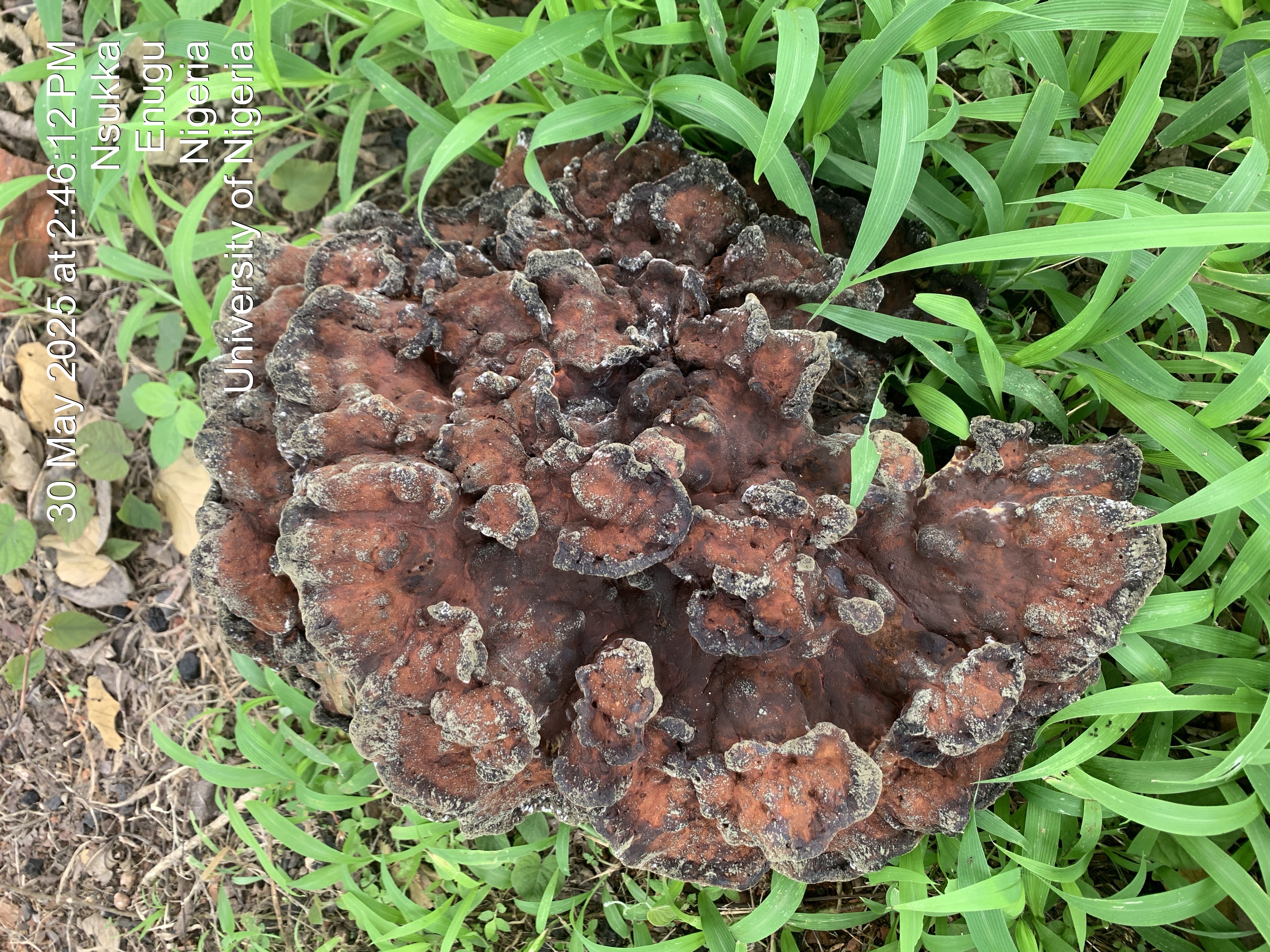
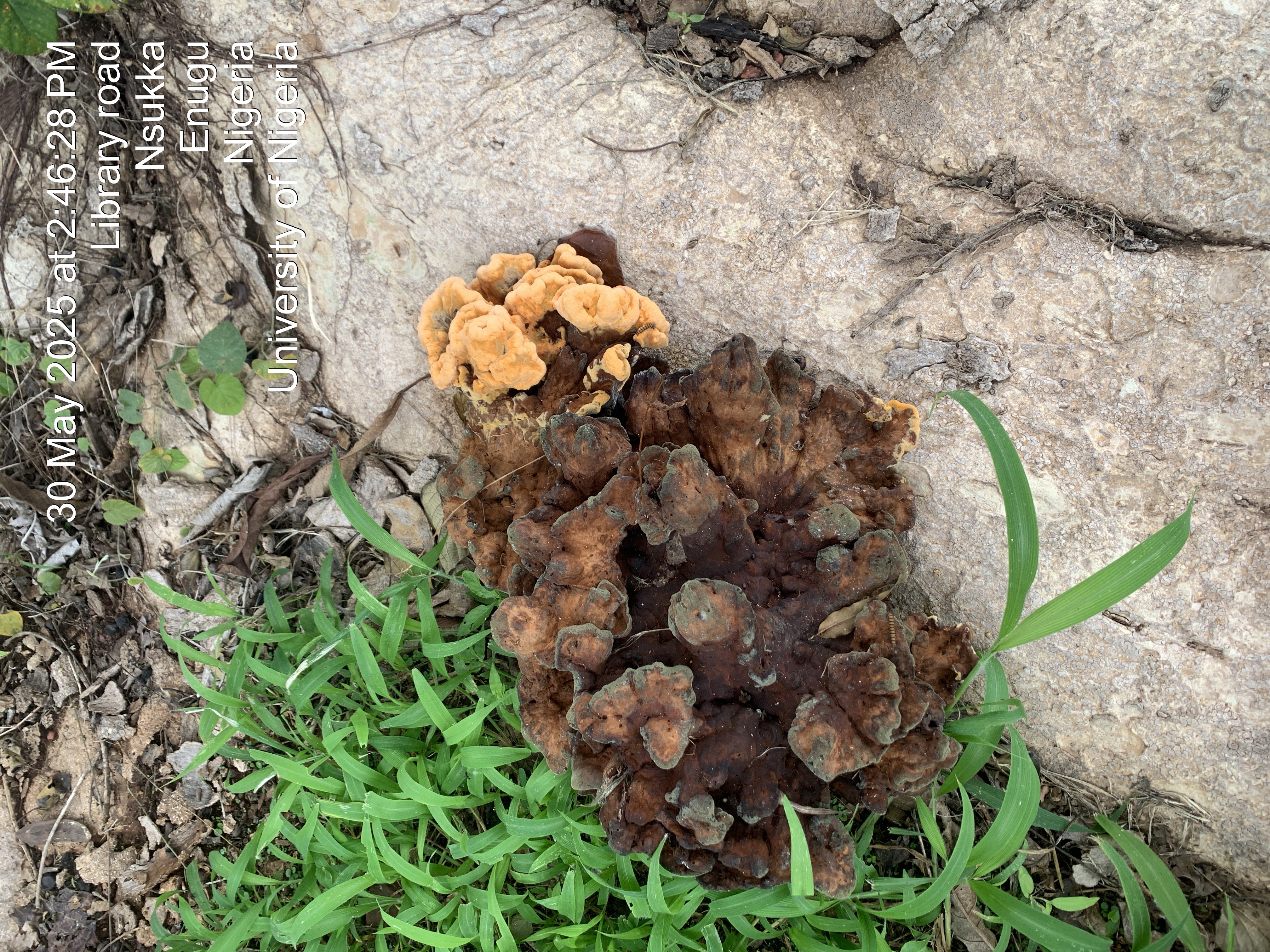


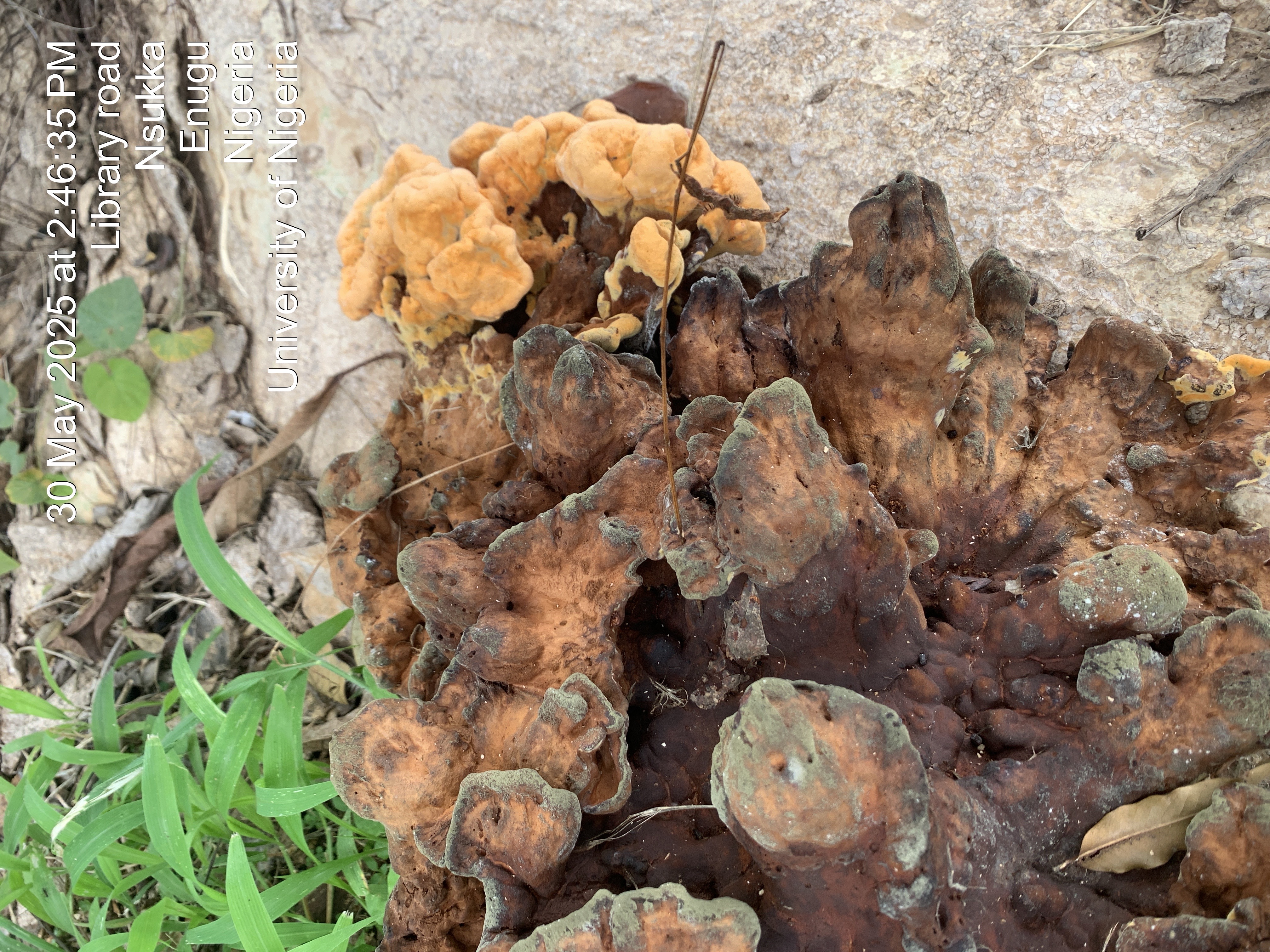
Although I saw some that where dying off
Both mushrooms play significant roles in nutrient cycling and organic matter decomposition in their respective habitats. Their presence highlights the richness of fungal biodiversity in Nsukka and underscores the importance of careful observation and identification when studying or handling wild mushrooms
Note guys, that not all mushrooms are edible, thanks for taking your time to read through my little adventure.